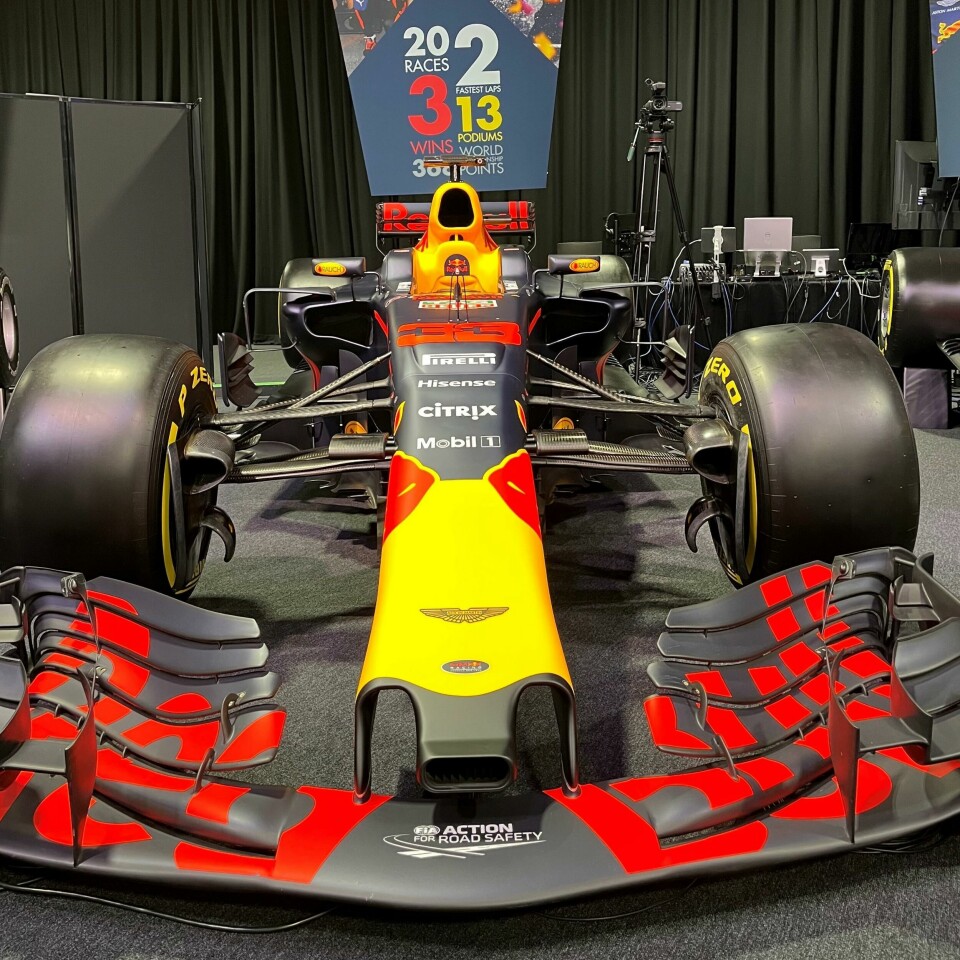
Quality data drives F1 peak performance
Formula one cars represent the pinnacle of automotive engineering and behind the scenes, high quality components and manufacturing data are key to on-track success. Oracle Red Bull Racing offered AMS a glimpse of its championship winning engineering operations.
Formula 1 teams are, understandably, secretive about their respective car designs and the related engineering, but at a recent innovation event at Oracle Red Bull Racing’s (ORBR) Milton Keynes HQ, organised by long-time technical partner Hexagon Manufacturing Intelligence, the team offered insights into its operations around race car development, component production and race preparation.
Much of this is centred around dimensional, geometric and structural measurement and quality control processes. And the process development and accuracy of these operations has played a key part in the team’s considerable success.
The long-term partnership with Hexagon has been a valuable part the team’s technical development as the performance levels are pushed to the limits of increasingly stringent technical regulations. The use of portable, handheld scanners has been particularly important both in the development of the car and at an operational level in both preparation and race weekend phases.
Data supporting innovation on the track
All the chassis and aerodynamic developments (and there many over the course of the season) must conform to strict dimensional requirements set out in FIA regulations. With designers and engineers continually working to increase the car’s performance they are always pushing innovations to physical limits of the rules, but the slightest error could result in disqualification.
Working with Hexagon, ORBR were one of the first teams to bring portable, highly accurate scanning equipment to the trackside, meaning they could check their cars met the regulations both before and after running. It’s fair to say that the team acknowledges the significant contribution this measurement and quality control equipment has made to the on-track success.

Credit - Oracle Red Bull Racing
Quality manager, Mark Foden has been with ORBR for 23 years and has been part of the development of process, working with Hexagon to improve both the accuracy and speed of the quality control processes:
“We’ve come from using a single touch point drive system about 18 years ago, which gave us a point at a known spatial distance or time, but very limited data, to where we are now with handheld 3D scanners, which can take hundreds of thousands of points a minute, not contacting the surface, not deforming the surface.”
Race car or road car – shared challenges
What is also interesting is that much of measurement equipment and software now used by ORBR is identical to that employed by high volume vehicle manufacturers.
The similarities don’t end there, design, development and speed to production are important to both ORBR and mainstream OEM’s and the processes share many characteristics. Much of the vehicle design and development is done virtually and for the F1 team the car’s ‘on-track’ development carried out using a simulator where extensive testing is undertaken to validate the performance of the design before it ever reaches the real racetrack.
For ORBR the product life cycle is governed by the duration of a particular set of technical regulations for that generation of car. These are set by the FIA and are intended to provide a level playing field for all teams, to manage costs and improve the sustainability of the sport.
Once the timeline for a set of regulations comes to an end then a new set usually means a completely new car must be designed and developed.
The costs for all the teams are capped and any overspend can be penalised. This has huge implications right through to team’s operations. The cars only return to the ORBR’s base five or six times during the course of the season to keep transport costs down, however, after each race the cars are dismantled, and every component is checked. Some of these are parts are shipped back to base for detailed examination by the quality teams. This becomes particularly complicated if the car has experienced any damage during the race weekend.
The cars are also being continually developed to improve performance, even in the smallest of areas. Between races there can be up to 1000 changes to the car’s setup requiring new components to be produced, validated and shipped under very tight deadlines.
Data management and closer collaboration
Here again the challenges reflect those encountered by other vehicle makers. The design, production and quality teams at ORBR are presented with huge amounts of data to sift through and understand, and this can be further complicated by a siloed approach across the different departments. Foden noted that this is an area the team has worked on. He observed that translating a new component design into a manufactured part is challenging and that any small deviation can result in the intended performance benefit not being achieved. This is where the quality team is bridging the gap between design and manufacturing:
“The quality department is now being reflected into the manufacturing department. We’re trying to help manufacturing components to start thinking about quality as a product and guiding in the use the tools, to give them more support.”
This is not to say the ORBR manufacturing operations are not to the highest standards (they are very sophisticated), but perhaps indicates the ongoing challenges around data management in production operations, and the importan
ce of much closer collaboration across internal teams.

Closing the loop between digital parts and physical parts
Hexagon has gained a particular perspective from dealing with a wider range of clients across different areas of automotive production. Asked about the main challenges in quality control the company sees across the industry, Hexagon’s VP Automotive Industry, Ignazio Dentici explained:
“The main challenge we see is understanding the best way to use data coming from the quality inspection. Today, the development of technology for quality inspection moving very quickly, evolving through a roadmap of multi sensors, etc. and these deliver good results in terms of the quality of the data. But the real challenge is how to convert these huge amounts of data into something actionable in the design process, or manufacturing and quality inspection operations, so how to optimise these processes using the available data.”
Dentici also noted that some of the highest demand for support with this is coming from the design and the manufacturing areas, where there is higher workflow of data in the design process:
“The design process is increasingly using simulation tools, digital twins, etc. where you need to have a high level of confidence in the data and a high level of cross correlation between your models, your digital twin and the real world. So, you need to close the loop between physical parts and digital parts.
“If you close this loop leveraging the high-level quality data coming from the real world, it increases the confidence in your design, and this translates very well in the manufacturing operations because you need to be sure that what you manufacture is exactly what you have designed, and it’s exactly what you have designed with the right level of quality and tolerances. So, this is the main challenge, the data workflow from quality across the full process, from the concept design to the detailed design, to the manufacturing.”


